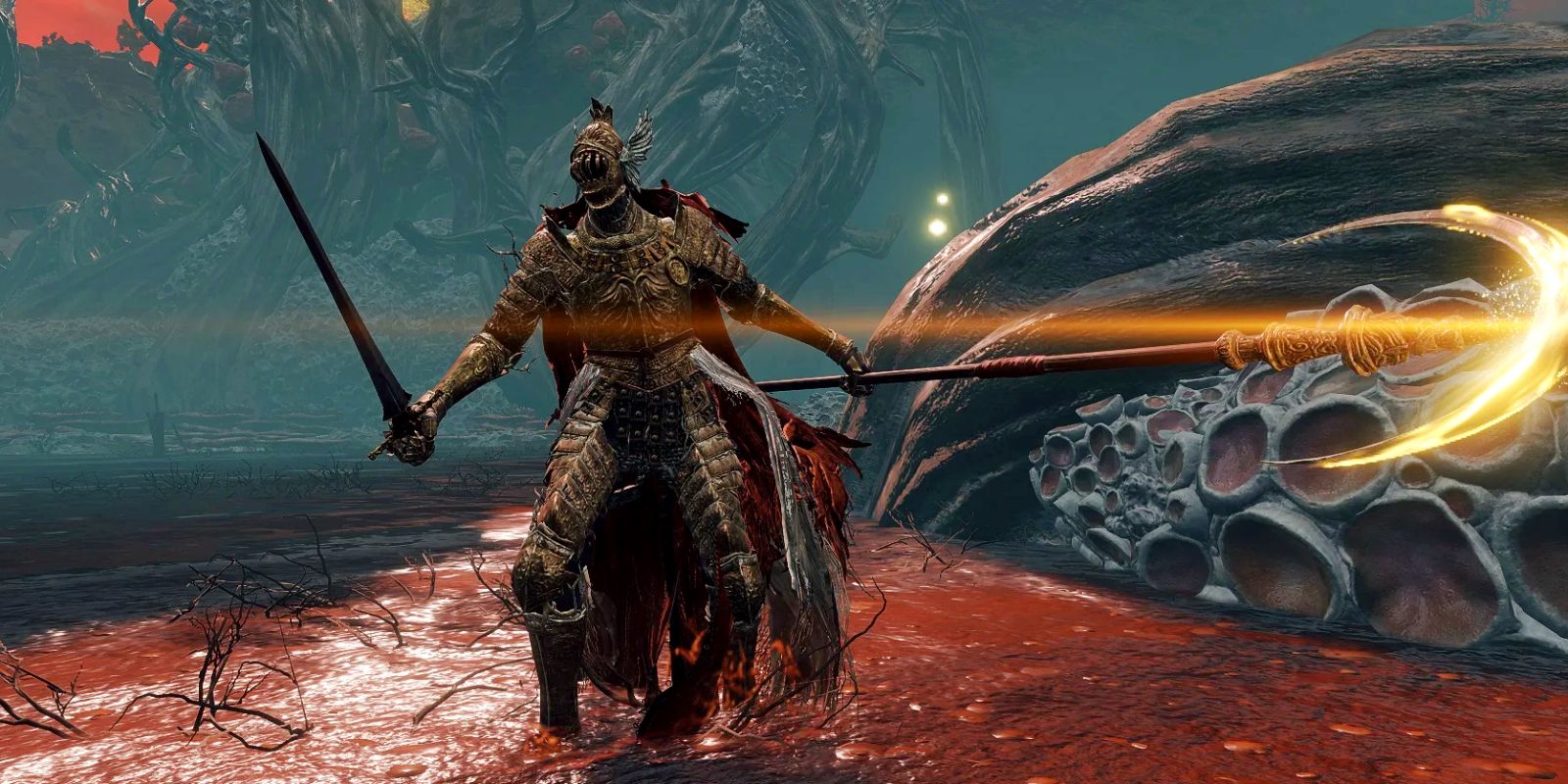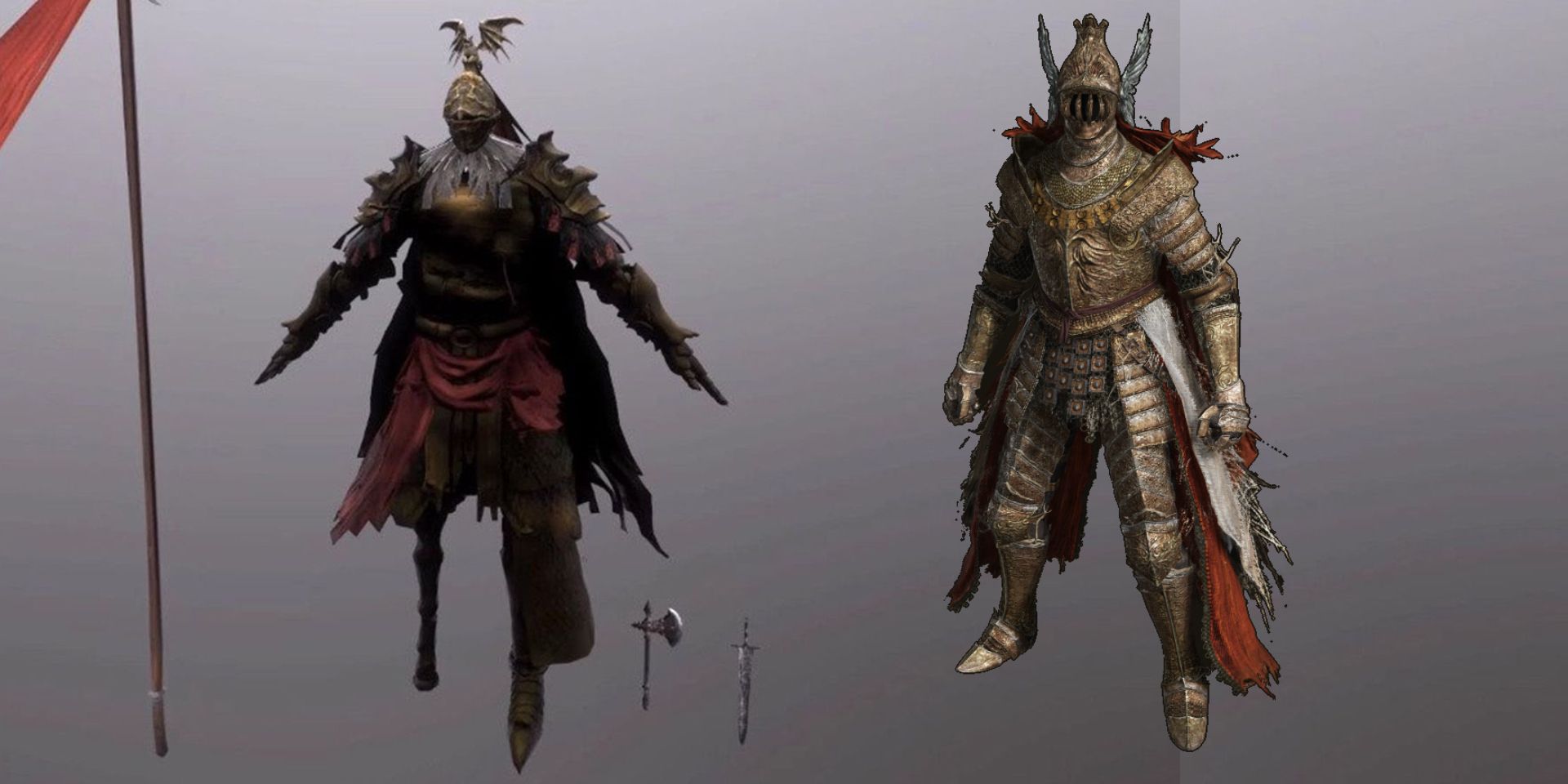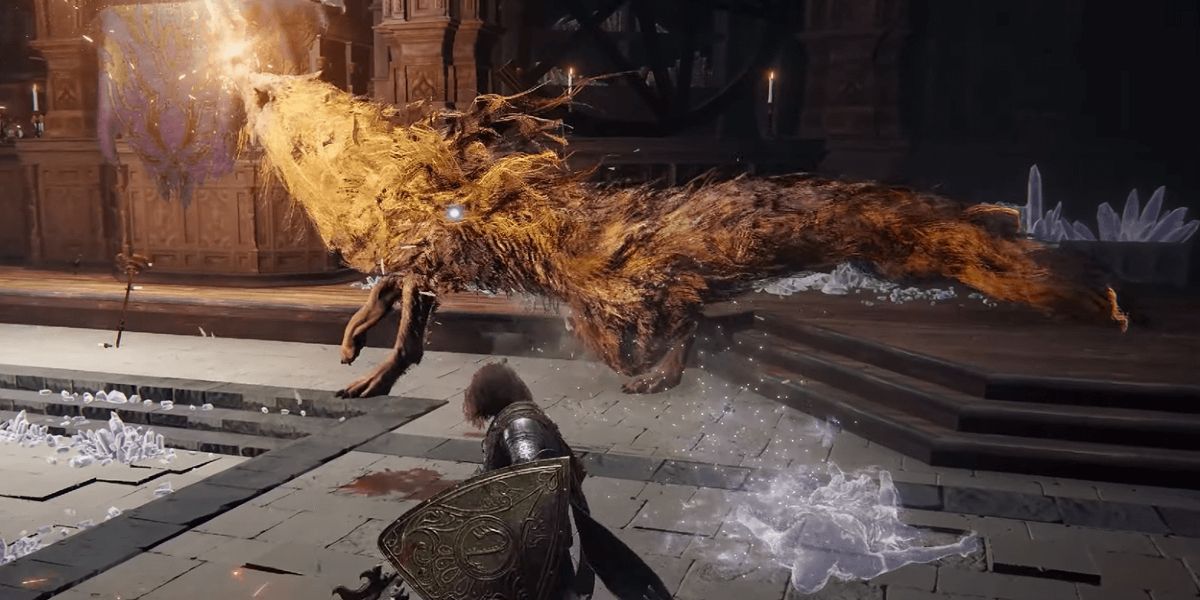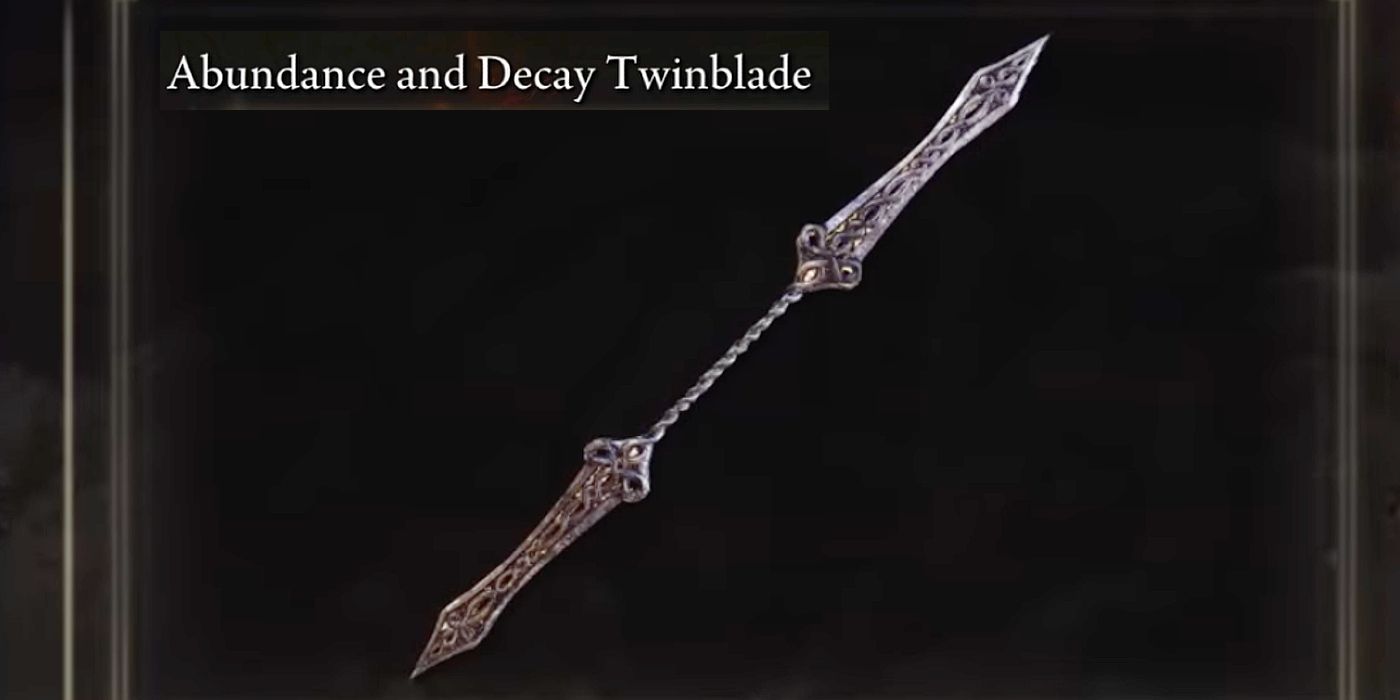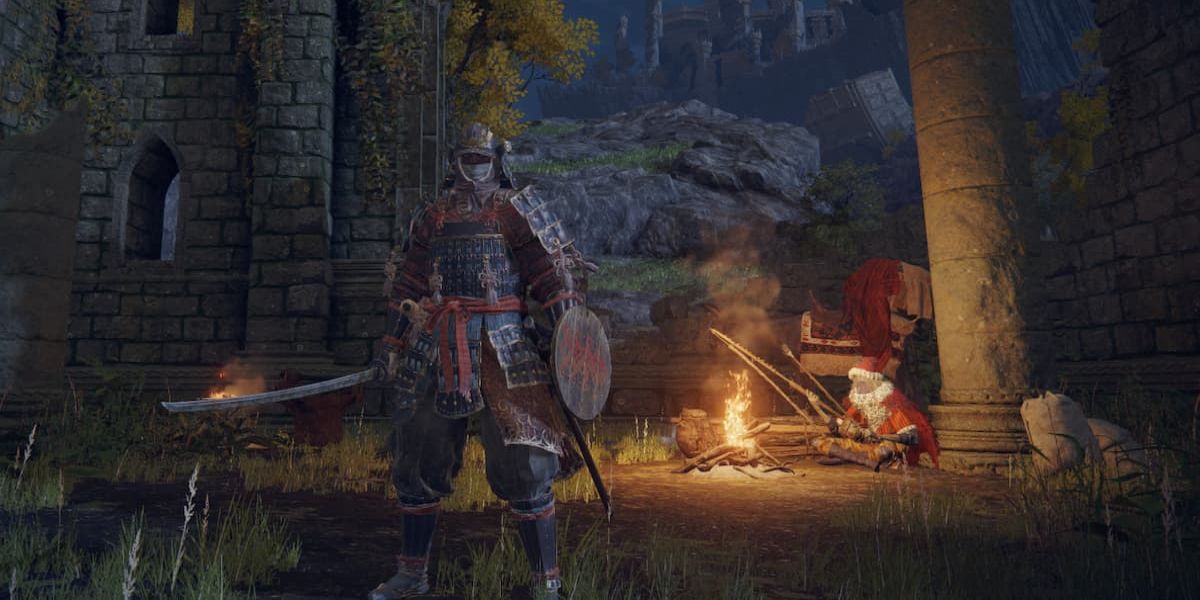As FromSoftware’s newest dark fantasy RPG, and as the current culmination of the Soulslike sub-genre created by the studio to date, Elden Ring contains several different examples of cut content. Some pieces of cut content in Elden Ring’s game files are minor assets such as clothing, consumable items, and non-player characters of varying friendliness. There are also a surprising number of quest-lines cut from Elden Ring before its main release. Finally, there are extant enemies and armor sets in Elden Ring that are fully-realized versions of cut content from older games like Bloodborne or Dark Souls 3.
The Japan-based game studio FromSoftware, particularly under the leadership of auteur game designer Hidetaka Miyazaki, has a reputation for recycling assets from previous games and re-implementing classic ideas in its newest releases. The movements and animations of Elden Ring’s giant crab enemies and skeleton enemies, for instance, were copied whole-cloth from Dark Souls 3. At the same time, data-miners who peruse the code of games like Bloodborne and Dark Souls will frequently discover a treasure trove of assets that were never completed or removed from the final product.
One might assume FromSoftware’s habit of recycling assets and cutting near-complete content is a sign of laziness on the part of developers, but such an assumption couldn’t be farther from the truth. By reusing assets from an older game in a new game with similar themes (Dark Souls to Elden Ring, in this case), developers at FromSoftware pragmatically chose not to recreate established assets from scratch, freeing their development team to work on new, innovative game concepts. Similarly, FromSoftware designers save promising pieces of cut content, eventually giving them new life in games with compatible premises and technical parameters. This “don’t reinvent the wheel” logic can be very clearly seen in the following pieces of Elden Ring content - content once cut from earlier Soulslikes and cut content in Elden Ring’s game files that might return in DLCs or future RPGs.
Bloodborne's Armored Enemy Inspired Armor In Elden Ring
FromSoftware’s gothic horror action RPG, the influential Soulslike Bloodborne, which released in 2015 as a PS4 exclusive, is very much a game about searching for bloody secrets and eerie cosmic truths. It’s only appropriate, then, that Bloodborne’s game data is full of secret, unimplemented content - cut lines of dialogue, cut level maps, and cut enemies of both gothic and eldritch grandeur. Among this lost archive of assets rests an 3D model for an ornate, bronzed suit of plate armor, the helmet adorned with a dragon crest and long flowing red tassels.
This medieval armor model - likely meant to form the basis of an enemy or outfit player could wear - was probably cut because it clashed with the flintlock and tricorne hat art direction of monster-filled Bloodborne proper. The general look and cloth tassels of this armor set, however, seems to have greatly influenced the armor set of Elden Ring’s Cleanrot Knights, Scarlet Rot-afflicted enemies who wield sacred weapons and once served the demigods Miquella and Malenia. The elaborate dragon crest atop the helms of Stormveil Castle’s Banished Knights also seems to have been inspired by the crest of the Bloodborne Knight outfit.
Wolf Enemies In Dark Souls 3 Became Elden Ring Mini-Bosses
The Red Wolf of Radagon, left to Queen Rennala by her ex-husband and king consort to Marika, Radagon, is a mini-boss players can encounter in the Academy of Raya Lucaria and other parts of Elden Ring’s open world. This proud, shaggy beast, which can summon homing glintstone blades and manifest a crimson saber in its jaws, shares many elements with lupine foes from previous FromSoftware games.
The general FromSoftware archetype of “giant wolf enemy with a sword in jaw” originated from the first Dark Souls, where players could meet, rescue, and eventually fight Great Wolf Sif, a mythical wolf who wields the great sword of his long-lost companion, Artorias. The long, shaggy hair of the Red Wolf enemy seems to have been inspired by the mutated Beast enemies of Bloodborne, particularly the Great One Beast boss cut out of the gothic horror game’s final release. Finally, Dark Souls 3, the final game in the Berserk-inspired Dark Souls series, has a game asset called the Old Wolf of Farron - initially conceived of as a Sif-style wolf enemy, later used as a static shrine for the Watchdogs of Farron player covenant. The size of this giant wolf asset, plus the curved great sword weapon associated with it, seems to have been the strongest influence on the final design of Elden Ring’s Red Wolf enemy.
Outfits And Weapons Cut From Elden Ring's Final Release
Within Elden Ring's game files rests an impressive amount of cut content - assets, descriptions, and dialogue for outfits, weapons, game mechanics, and even quest-lines. Some of these assets may, like the once-cut content above, be revisited in future FromSoftware games. Alternately, a good chunk of these assets may be patched back into Elden Ring with future updates or DLCs, granting players access to new areas, new challenges, and even new endings.
There are two armor sets in Elden Ring's files that are fully rendered and functional, causing some fans to wish for the inclusion of said outfits in Elden Ring's future DLC. The first outfit is the Brave's Set, comprised of fur, layered cloth, and a Skyrim-style leather helm; the descriptions for each piece describe the Brave's Set as being worn by "warriors of the frigid uplands," suggesting a link between the wearers of this outfit and the Viking-style mercenary enemies who wear Elden Ring's cosplay-able Kaiden Armor Set. The second outfit is called the Ragged Set, an on-brand combination of ragged hat, breastplate, chain-mail gauntlet, and loincloth initially obtainable in Elden Ring, but subsequently removed after a patch.
Additionally, Elden Ring's data contains cut icons and descriptions for two weapons strongly associated with Miquella, the perpetually young demigod creator of the Haligtree, and his twin sister Malenia, Blade of Miquella, found at the bottom of the Haligtree area. This first of these weapons, the Abundance Twinblade, is described as containing the "power of the Rune of Abundance," and has a description of a holy, powerful Ash of War skill called Miquella's Hidden Blade. The second twinblade weapon, the Abundance and Decay Twinblade, has a more jagged, organic look; the description for this weapon discusses the inseparable fate of Malenia and Miquella and claims the Twinblade contains the Runes of both Abundance and Decay.
Quest Lines And Dialogue Cut From Elden Ring's Final Release
There are several quest lines cut from the final release of Elden Ring despite being almost entirely complete. Notable YouTube modders and data-miners like Lance McDonald, Zullie the Witch, and Garden of Eyes have made great strides uncovering and even restoring this cut content, shining light on ideas that FromSoftware either discarded or decided to revisit in future DLC.
First, there are the Arenas of Elden Ring. In the Lands Between open world, players can stumble across three arenas in the Limgrave, Caelid, and Leyndell Royal Capital areas (the last being patrolled by Gladiator enemies). These arenas can't be entered in Elden Ring's current release, but modders have been able to uncover sand-covered battle arenas, assets for hostile NPCs, and a reception area with an inactive Site of Grace checkpoint. All these seem to be ingredients for a multiplayer PvP combat space similar to those seen in DLC for Dark Souls 1 and 3.
Next, there is a half-combplete quest line centered around a cut NPC named Rico. This Rico, in recovered dialogue files, enlists the player's Tarnished PC in a scheme to gather dream mist," stolen from the dreams of Elden Ring enemies, in order to brew a heady beverage called Dreambrew. This quest-line would have let players harvest dream mist items from enemies afflicted with the Sleep condition, would have let players learn the secrets of NPCs who were gifted bottles of Dreambrew, and may have shone some light on St. Trina, the mysterious patron saint of sleep-inducing weapons and items in Elden Ring.
There are files of voice-acted dialogue for an incomplete quest centered around an NPC named Asimi. Based on the dialogue, this Asimi would have been a Mimic Tear creature found in one of Elden Ring's underground regions, freshly sentient and afraid of death. After accepting her offer to 'merge' with the Tarnished character, Elden Ring players could have helped this Mimic Tear complete her personal quest-line (much like players can do with the NPC Latenna in Elden Ring's base game). The resolution of this quest, for good or ill, might have been how players originally gained access to the Mimic Tear Spirit Ash, the most versatile of Elden Ring's summoning options.
Finally, there is the quest line for Merchant Kalé, the first vendor character players can encounter in Elden Ring's starting area. In the base game, Kalé simply gives players advice, sells them the essential Crafting Kit item, and guides them toward the half-wolf NPC Blaidd. Within the files of Elden Ring, however, rests a cut, complete, and dark quest-line for Kalé where he tries to discover the fate of his ancestors from the Grand Caravan. Eventually, Kalé discovers a chamber deep beneath the catacombs of Leyndell, filled with the corpses of his ancestors who were entombed alive and left to die. Livid with fury, Kalé swears vengeance on the Golden Order that condemned his kindred and seeks out the life-incinerating Frenzied Flame in order to do so.
Sources: YouTube (Lance McDonald, Zullie the Witch, Garden of Eyes)

